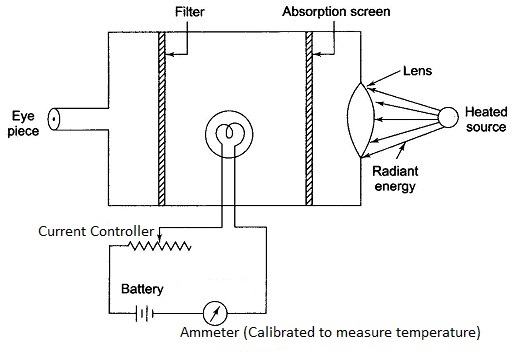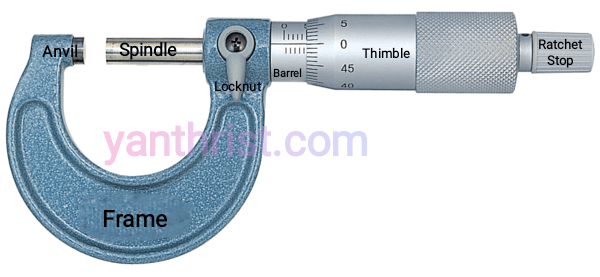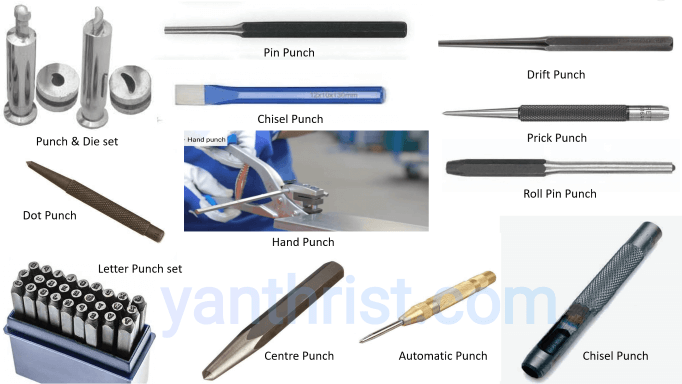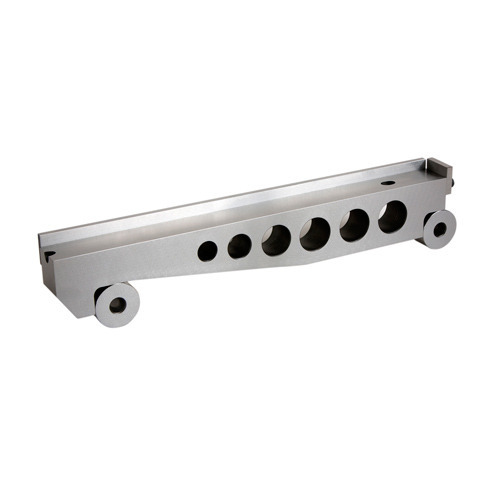INTRODUCTION
We often need to precisely measure the temperature of a high temperature systems such as that of furnaces in heat treatment processes, without which, proper results cannot be obtained. Whenever the temperature to be measured is above 370 degrees Celsius, it cannot be measured by a simple ordinary thermometer. It is because mercury boils at 370 degrees Celsius. It is in this case that we need high temperature measuring devices or pyrometers.
A. THERMO-COUPLE PYROMETERS
Thermo-couple or Thermo-electric pyrometers work on the principle that when two wires of dissimilar metals are joined together to form an electric circuit and their one junction is kept at higher temperature, in comparison to the other, an electric current starts to flow in the circuit. The setup formed by the two twisted wires together is called Thermocouple.
One end of these wires is inserted in the object whose temperature is to be measured (hot junction) and the other end is is kept at a very low temperature by dipping it in ice water, etc. A milli-voltmeter is calibrated in degrees of temperature corresponding to the potential difference created, to give a direct reading.
The commonly used metal combinations for thermocouples are: Copper-Constantan (upto 500 degrees Celsius), Iron-Constantan (upto 900 degrees), Chromel-Alumel (upto 1150 degrees) and so on.
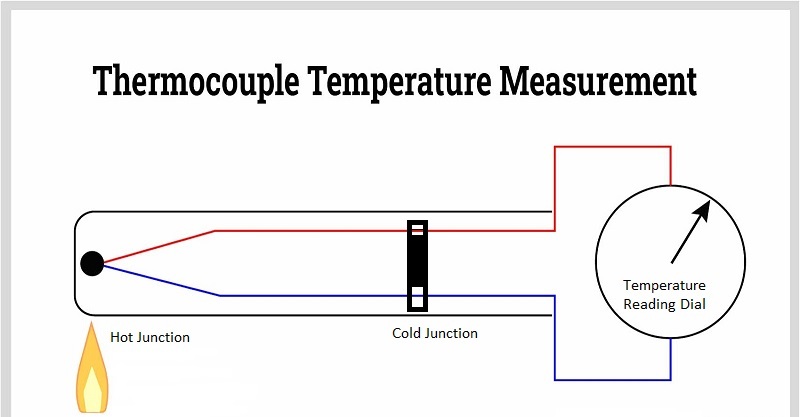
B. ELECTRICAL RESISTANCE PYROMETERS
These pyrometers work on the principle of Wheatstone Bridge Circuit. There are two known resistances R1 and R2 of equal value, a variable resistance R3 and an unknown resistance R4. Potential difference between A and B is recorded on the galvanometer G.
The variable resistance is so adjusted that the Galvanometer reads zero, showing that (R1/R3)=(R2/R4). For temperature measurement, R4 is replaced by a platinum wire. This wire is encased in a porcelain sheath and placed in the hot region, whose temperature is to be determined. With the rise in the temperature, the resistance of the wire rises and it causes an imbalance and the galvanometer needle gets deflected.
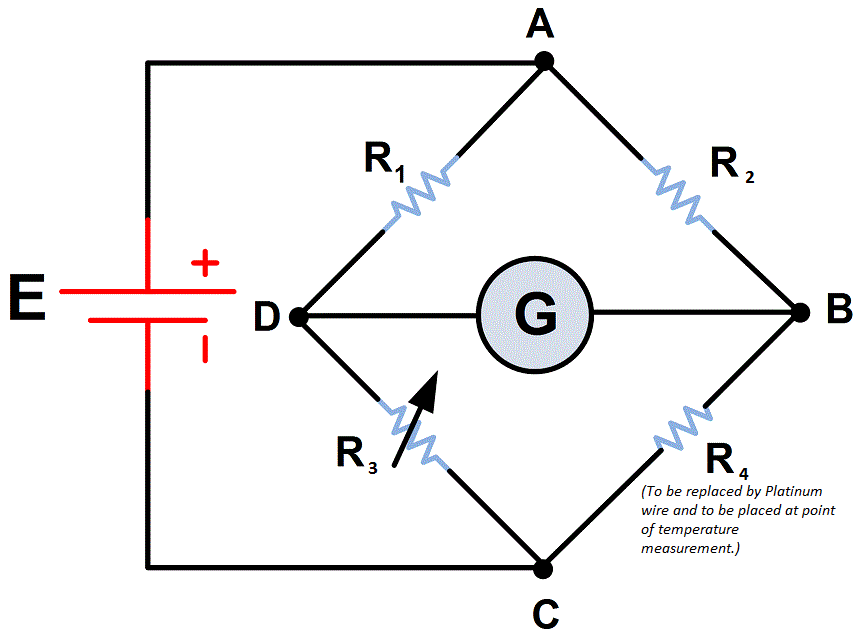
Again by varying the variable resistance R3, the galvanometer needle is brought to zero. This change in R3 corresponds to change in resistance of the platinum wire and is used for calibration. For direct measurement of the temperature the variable resistance is calibrated for two corresponding values. Such a pyrometer can be used to measure temperatures up to 1400 degrees Celsius.
C. OPTICAL PYROMETER OR DISAPPEARING FILAMENT PYROMETER
It also uses the principle of Wheatstone Bridge to measure the high temperature. It contains an electric lamp, an eyepiece and a regulator to vary the resistance and to adjust the current supply to the lamp.
While using this instrument, it is sighted on to the hot metal and by adjusting the current supply to the lamp, the lamp filament is brought to the same brightness as that of the hot metal. In this configuration, the lamp filament disappears against the background of the hot metal. A milli-ammeter used in the circuit is calibrated with temperature scale which gives a direct reading in degrees of temperature corresponding to the Out-of-Balance current through the bridge.
These pyrometers can measure temperatures in the range 800-1400 degrees Celsius.
